The history of the table is an ancient one, not only for the activities carried on at it, but also as a meeting spot. Independently from its functional role, the table has evolved over time to become an essential object from a social and aesthetic standpoint. Concepts such as power, status and social interaction revolve around the physical presence of the table, which design and scope have extended well beyond its original purpose.
The word table derives from the Latin tabula, but the first examples of tables were already used by the Egyptians as early as the second Millennium b.C., though with a purely practical purpose: they were used to keep objects raised from the ground.
The Greeks introduced what's considered the table's most ancient shape, the rectangle. It had three legs and became popular in the whole of the Mediterranean area. The Romans then gave it a round shape, with a central stand split into three legs. They dubbed it the mensa Delphica. The most common materials employed in its construction were wood, bronze and marble. They were usually quite elaborate, especially the legs that were inspired by the Romans' dedication to their numerous divinities and shaped into animal paws, or human and mythological figures.
The Romans also increased the size of tables, which became increasingly ornate, and were used during feasts and banquets, turning into a status of opulence and power.
During the Middle-Ages, up until the fourteenth Century, tables were considered as a mere commodity: the most common design consisted in massive oak or elm boards placed on top of a series of trestles. They were covered by tablecloths or even carpets, and after the meals they would be dismounted to be stored away.
Things started to change towards the second half of the 1300's, when the table became the place where guests would meet and socialise. Long tables started to be built, with the longest ones being complemented by benches and chairs. Once again tables became a status symbol. Normally, the master and his guests would sit at a table on a canopied dais, with the rest of the family sitting at tables placed perpendicularly to the master's.
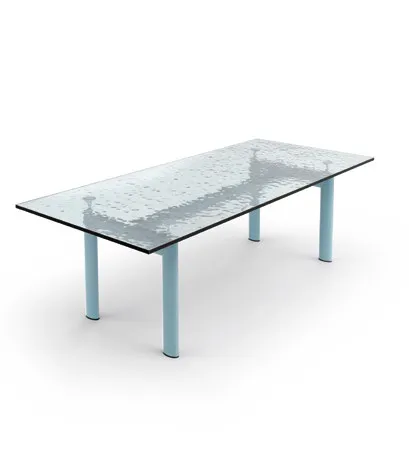
Cassina's LC6 design “Table tube d'avion” represents one of the first study models introduced by Le Corbusier, Pierre Jeanneret and Charlotte Perriand at the Paris Salon D'Automne in 1929. Its core concept is the distinction between the frame and the tabletop: the autonomy of the two parts is stressed by 4 intermediate stands used to set the desired height of the top and act as a separation between the sturdy base and the slender lines of the tabletop.
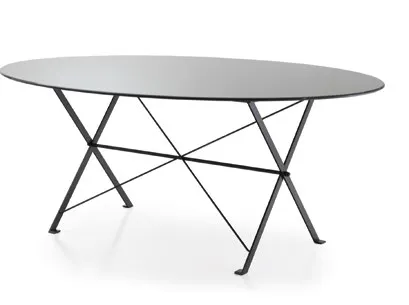
Designed by Luigi Caccia Dominioni for his own home in 1941, it was inspired by the trestles he used to work on when a student at Milan's Politecnico. The table contains all the key elements defining an Italian designer and architect: sophisticated curves, rigorous straight lines, minimalism that adds to the beauty of the object. It went back in production in 2018.
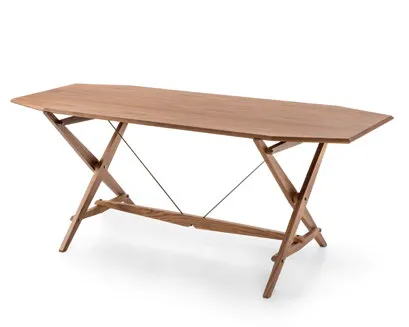
A minimalist, light looking table that enhances the rigorous work of Franco Albini and the manufacturer's superior woodworking skills. The table's structure is based on contrasting tensions, revealing an apparent transience suggested by the skilful reduction of volumes and masses.
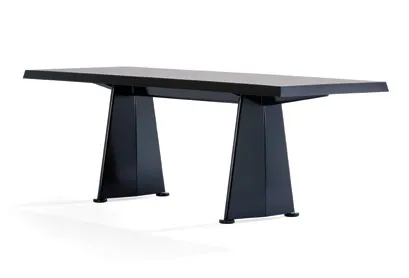
Jean Prouvé originally designed the Trapèze table for the Cité Universitaire in Antony, near Paris. The trapeze-shaped legs inspired its shape and give the table its distinctive character. It has a HPL (High Pressure Laminate) top and the legs and crossbar are in press-formed sheet steel.
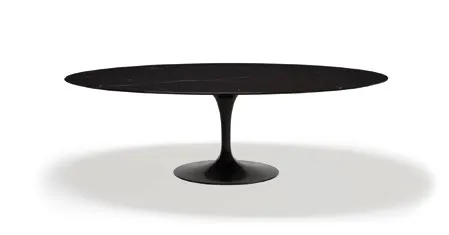
Finnish-American designer Eero Saarinen vowed to address the “ugly, confusing, unrestful world” he observed underneath chairs and tables - the so-called “slum of legs.” A five-year design investigation led him to the revolutionary Pedestal Collection. Featuring a heavy moulded cast aluminium base, the tables are available in white laminate, coated marble in a wide range of colours and veneer.
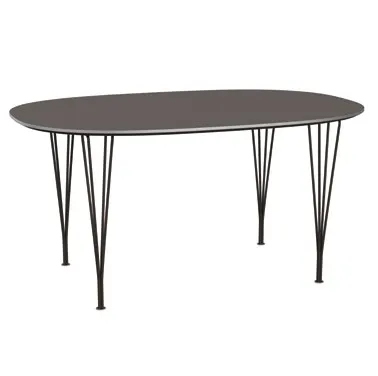
Superellipse Collection, 1964-68
Designed by philosopher Piet Hein and mathematician Bruno Mathsson, the Superellipse table is characterised by its particular shape, halfway between an oval and a rectangle. It was inspired by designer Piet Hein's solution to a traffic problem in Sergel Torg, Stockholm

Platner, Knoll International, 1966
In 1966, the Platner Collection captured the “decorative, gentle, graceful” shapes that were beginning to infiltrate the modern vocabulary. The iconic pieces are created by welding hundreds of curved steel rods to circular frames, simultaneously serving as structure and ornament. Polished Nickel or metallic bronze base. Clear or bronze glass and marble top.

Doge, Simon/Cassina, 1968
Doge is a cornerstone of Italian design and the manifest of the Ultrarational movement of the late 60's. Ultrarationalism's intent was to overcome the limits of rationalism through the restoration of traditional values such as aesthetics. The aluminium or satin steel base is the essential part of the table, while the elegant, refined nature of the top element is enhanced by the transparency of glass.
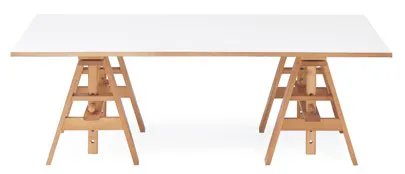
Working table Leonardo, Zanotta, 1969
Leonardo is a table “of the memory”, being the archetype of worktables on trestles. Its design reflects the philosophy of its designer according to whom “design has always existed and the best objects are those not signed by the architects”. This product resembles the elements of Zanotta's production philosophy: essentiality, simplicity, best quality of the materials, excellence of workmanship, care for detail.

The chequered pattern was a creation of the Superstudio group in 1969 as part of a study on “histograms”, consisting in a series of objects built using an orthogonal mesh pattern that could be scaled and adapted to different contexts, from design to urban architecture, giving rise to the “movimento continuo”, or “continuous motion” movement. The table, like all the other objects in the “Misura M” series, is made of honeycomb wood plated in white print laminate with an isotropic chequered motif. The mesh is digitally printed.

Eros Collection, today Agapecasa, 1971
This marble tables system represents a milestone in the research on interlocking furniture: for the “Eros” series the solution consists of a gravity joint between the tops and the legs, which have a truncated cone section and lodge into the four grommets at the corners of the tops. This bell & spigot type joint, says Mangiarotti, evokes the “male-female” symbolic union.
Copyright © Homa 2023
All rights reserved

.jpg?VGhlIFBlcmZlY3QgU2xvdC1pbijmraPnoa4pLmpwZw==)












.jpg?MTkyMHg3MjDvvIhkZXPvvIkuanBn)
.jpg?MTAyNHg3NDDvvIhkZXPvvIkuanBn)



















